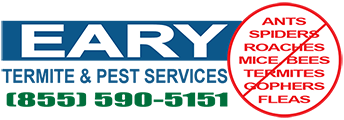
01 Feb Subterranean Termites: Identification and Signs of Infestation
Subterranean termites live in secluded areas above the ground or in underground colonies. This type of termite can cause significant damage compared to other termite species. They often build mud tubes that serve as a habitat and help them reach food sources.
Their main food source is wood, which they eat with their saw-toothed jaws. Since they eat wood all day, these termites can cause significant damage to the structure of a building in the long term. Since this termite species causes significant damage across the United States, you should be able to identify and understand how to treat the problem. Read on below.
Identification
This type of termite lives in colonies made up of millions of termites. These termites share resources, such as food and shelter, and care for their young in the colonies.
Subterranean termites are divided into three castes, as outlined below.
Workers
This caste consists of termites with no wings. They are approximately an eighth of an inch in length, with cream-colored bodies. Workers have small jaws, which they use to move materials and chew wood. They also have large mandibles; rectangular-shaped, brownish heads; and flat, wide bodies.
Alates/Swarmers
You can identify alates by their long, dark-brown-to-black bodies. They have dark bodies and two pairs of milky-colored wings that may have a few visible hairs. This is the only caste whose eyes and wings are fully functional. Once they land, swarmers shed their wings, mate, and become the kings or queens of new colonies.
Soldiers
Soldiers are sexually immature males and females in a colony. They have black mandibles and jaws that they use to defend the colony. Worker termites feed soldier termites because their jaw evolution only allows them to defend the colony. They have black mandibles and jaws and a big head that is darker than the rest of the creamy-white body.
Signs of Infestation
Subterranean termites tend to remain hidden underground and within wood, so you may find it difficult to detect their presence. But you can still tell if there are subterranean termites in a few ways.
Winged Termites
You may notice a large number of reproductive termites that emerge from their colonies, especially in the spring. This specific caste is attracted to light, so you may find them or their wings around doors, window sills, vents, and light fixtures.
While these termites that emerge may not necessarily mean your house is infested, you should investigate further to see if there are other colonies already established in the soil.
Wood Damage
You may not notice wood damaged by subterranean termites because you have to remove the exterior surface to notice the damage. However, you may tap every few inches of wood with a screwdriver to see if there are any galleries. If the wood sounds hollow or is broken by the screwdriver, there may be termites in the area.
Subterranean termites will attack soft springwood and feed along the wood grain. The termites then use wood pellets and wood particles to construct new tunnels.
Insulation Damage
Subterranean termites may also damage building insulation. The termites do not eat the insulation because insulation provides no nutritional value to them. But the insulation is soft, and termites may build tunnels through the material, which reduces its effectiveness. Insulation products may also have a paper cover that termites eat.
All this interference causes a loss in the insulation material’s properties and may lead to a spike in energy bills.
Mud Tubes
Subterranean termites build mud tubes as habitats that protect them from predators and keep them from drying out. You should inspect your house yearly for evidence of tubes, especially if the house has a crawl space, cracks, and a slab.
If you suspect that you have a termite infestation in your home, you need the intervention of a professional pest control company. Reach out to us at Eary Termite & Pest Services for more information.




Sorry, the comment form is closed at this time.